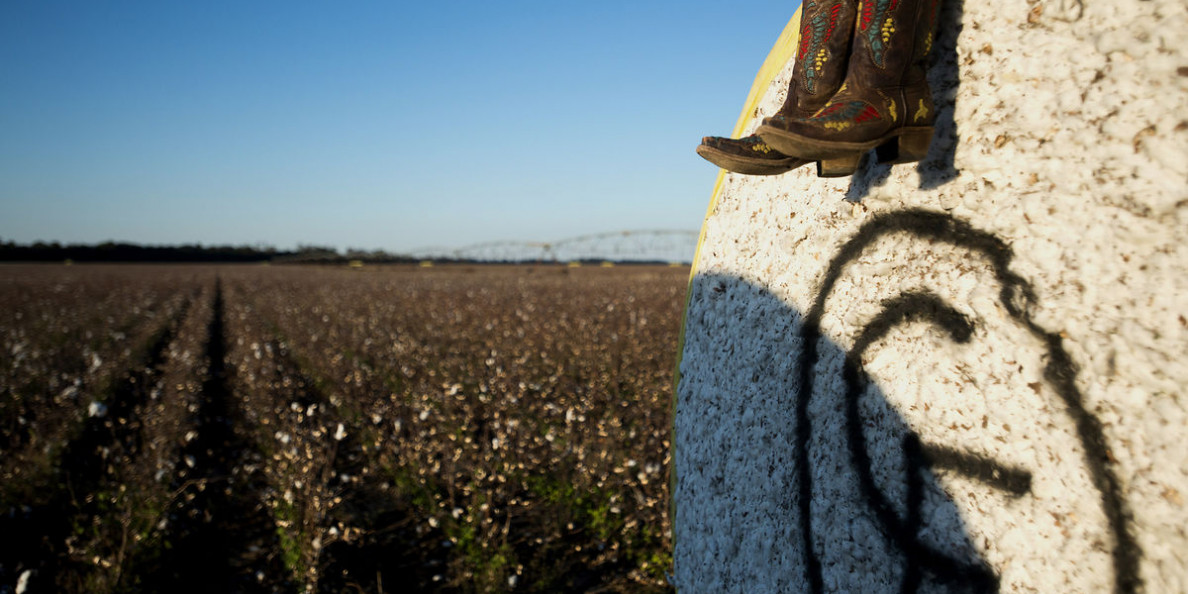June 16, 2023
- FOMC Kept Interest Rates Steady After 15 Consecutive Months of Rate Hikes
- U.S. Export Sales and Shipments Dismal for Week Ending June 8
- Crop Progressing in Texas, Oklahoma, and Kansas with Recently Dry Weather
The cotton market continued to trade in a choppy, two-sided pattern throughout the week. Last Friday’s release of the World Agricultural Supply and Demand Estimates (WASDE) report did little to move the market, as many of the changes made were expected. Weather, questions of weakening demand, and larger crops from Brazil and Australia added pressure to cotton prices throughout the week. News in outside markets provided little support to the futures market. Both the July and December contracts traded lower each day since the close last Thursday. For the week ending June 15, the July contract settled at 80.64 cents per pound, down 367 points. December futures fell below 80 cents again and eventually settled at 79.60 cents per pound, down 203 points from the week prior. Total open interest fell substantially from last week, with much of the decline coming from the July contract. A decrease of 20,664 contracts brought total open interest to 169,708.
Outside Markets
The Federal Open Markets Committee (FOMC) met this week and, as anticipated, interest rate levels were held steady. The Fed left the door open to future raises in interest rates and said cuts to rates are not likely to occur until 2024, when prices are further stabilized. The projected peak interest rate is now expected to be higher than the initial 5.1%. This was, however, the first pause seen since the Fed started raising interest rates 15 months ago. The Consumer Price Index (CPI) and Producer Price Index (PPI) were also released this week. The CPI showed a 4.0% month-over-month increase, which was lower than market expectations. The PPI also showed a 1.1% year-over-year gain, which is the smallest gain seen in over two years. The only surprise raise this week came from U.S. retail sales, which increased 0.3% month-over-month as opposed to market expectations of a 0.2% decline. U.S. initial jobless unemployment claims were reported at 262,000, unchanged from last week and remaining at the highest level in 19 months. While major indexes rallied on this data, the Dollar lost ground towards the end of the week.
Export Sales
Export sales were dismal for the week ending June 15. A net total of 98,900 Upland bales were sold for the 2022/23 crop year. China, once again, held the majority of sales for the week, booking a total of 70,500 bales. This was followed by Bangladesh with 11,700 bales, Vietnam with 9,900 bales, Indonesia with 4,500 bales, and Taiwan with 2,900 bales. Demand for new crop continues to be negligible for what is typical at this point in the year. A net total of 65,700 bales were booked for the 2023/24 crop year. Shipments slowed as well, with a total of 244,800 bales exported for the week. This is below the pace needed to meet the new USDA export estimate of 13.0 million bales. Sales and shipments of Pima were down compared to recent weeks. A net total of 2,000 Pima bales were sold and 300 bales were exported for the week.
Weather and Crop Progress
West Texas saw a bit of relief from the recent rains, which is beneficial as many producers still had cotton to get in the ground. Above average temperatures are expected in the coming week, which will help spur growth in the recently planted crop. Unfortunately, the Panhandle of Texas has not fared as well. An excessive amount of rain and severe storms have greatly impacted the cotton acres that were expected in that area. The South Texas crop is maturing quickly, but excessive heat is now becoming a concern. Kansas and Oklahoma have slowly started to pull out of droughty conditions and the crop is starting to progress. The U.S. is still slightly behind in planting with 81% of the expected crop planted, which is behind the 5-year average of 86%. For the Southwest, 72% of the expected Texas crop, 93% of the Kansas crop, and 66% of the Oklahoma crop has been planted. Crop conditions in the U.S. have declined slightly from the week prior. The cotton condition report rated 9% of the crop as “Excellent”, 40% as “Good”, 36% as “Fair, and 13% as “Poor”.
The Week Ahead
With the WASDE report and FOMC rate decision behind us, attention will shift back to the fundamentals. First Notice Day begins on June 24, and while many traders have already wrapped up their old crop positions, activity will still be present. Markets will be closed on Monday, delaying many reports for the week. The Crop Progress and Condition Report, Export Sales Report, and weather forecast in the Southwest will continue to be a point of focus in the coming week.
IN THE WEEK AHEAD:
- Friday at 2:30 p.m. Central – Commitments of Traders
- Tuesday at 3:00 p.m. Central – Crop Progress and Condition Report
- Thursday at 2:30 p.m. Central – Cotton On-Call
- Friday at 7:30 a.m. Central – Export Sales Report


